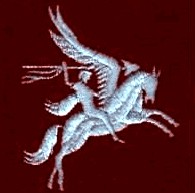
The Belgians S.A.S. Parachutists

Hommages et témoignages :
Josse Van Cauter (from his daughter Dominique)
 |
The Belgians S.A.S. Parachutists
|
 |
|---|---|---|
| Names of the Belgians Parachutists | ||
| Fallen to the Field of Honour | ||
Hommages et témoignages : Josse Van Cauter (from his daughter Dominique) |
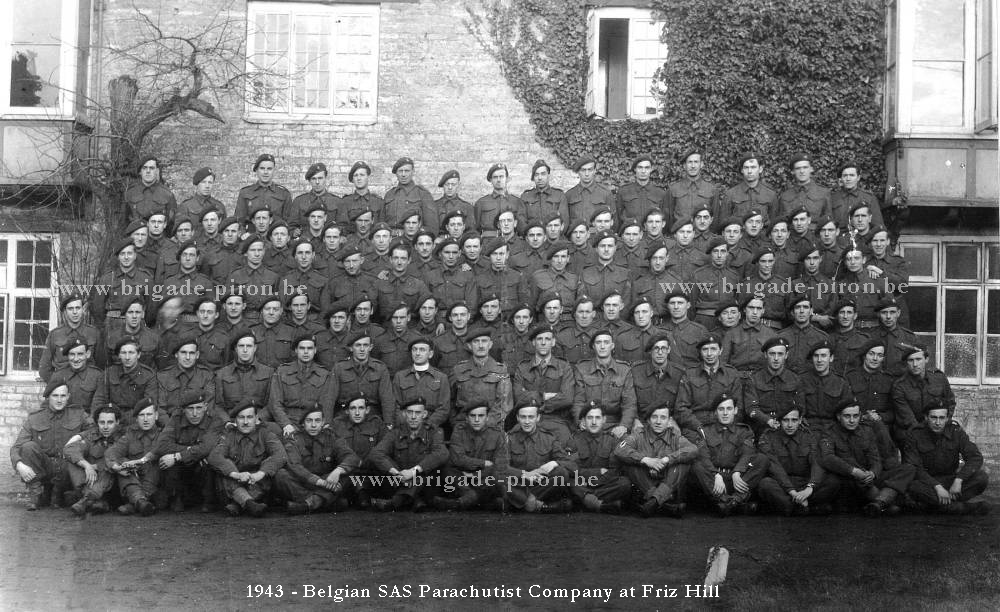
Created on May 8, 1942 by Henri ROLIN, under State Secretary of National Defence, the Unit was created like an independent parachutist company in the Special Air Service Brigade.
 |
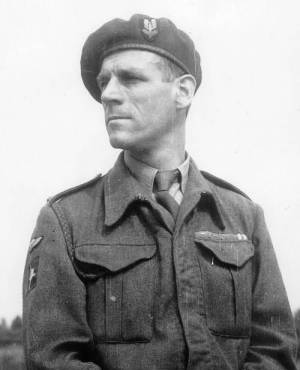 |
|---|---|
Commandant THISE |
Capitaine BLONDEEL |
PHASE I - PARACHUTED OPERATIONS
A. FRANCE
1. Hills of Perche : operations CHAUCER, BUNYAN, SHAKESPEARE.
The Unit was parachuted behind the enemy lines on July 27, 1944 successively in the Sarthe, the Eure-et-Loire, towards the Estuary of the Seine. The first group included three teams of six men having for mission to recognize the area and send information. August 8, on their indications they were joined by three groups, each one with fifteen men. The mission of providing information about the movements and positions of the enemies and of harassing them without slackening.
2. Normandy between Seine and Eure. Operation TRUEFORM
On August 16, 1944, 80 men were parachuted by night in the enemy lines on the East of the pocket of Falaise, with mission of badgering the enemy armoured columns in retreat.
3. Picardie. Operation BENSON
On August 27, 1944, a reconnaissance group was parachuted on the east of Beauvais, discovers complete document giving the battle orders of German divisions in front of the Somme.
During these operations, these groups :
a. inflicted heavy men and materiel losses to the enemy
b. gave to the allied aviation many military objectives which were attacked successfully
c. effectively contributed to spread the disorder and confusion to the enemy which was driven back the pocket of Falaise and in retreat towards the East
d. delivered and brought back in the allied lines approximately two hundred aviators fallen in occupied territory.
B. BELGIUM
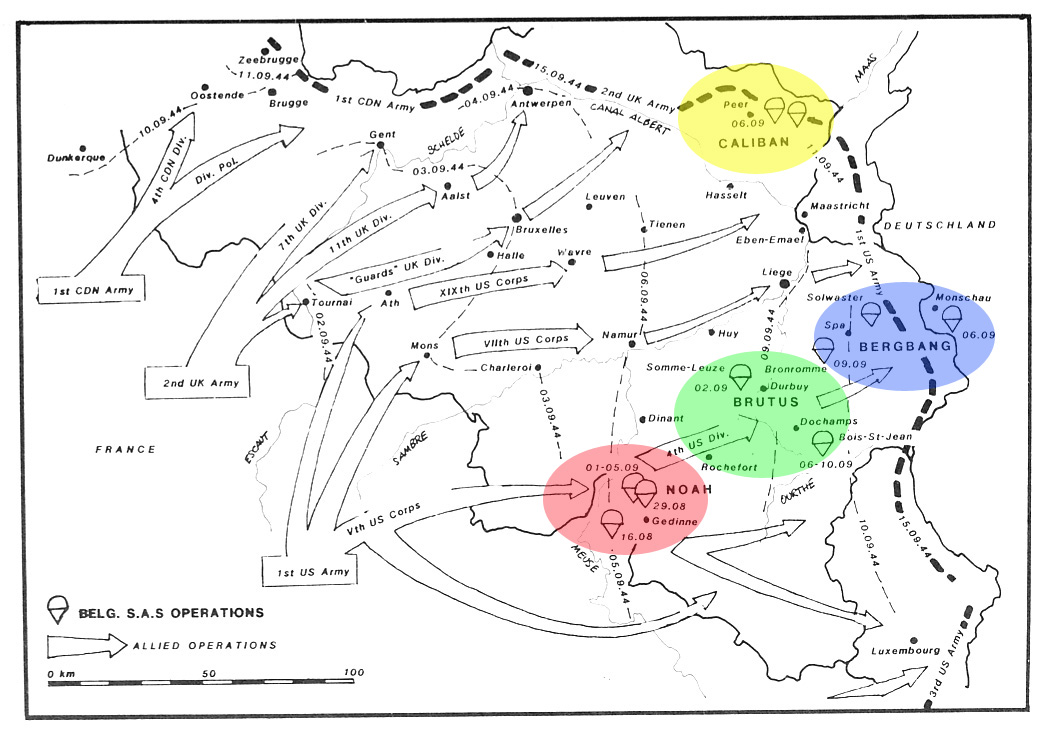
On August 15, 1944, a reconnaissance group was parachuted in the French Ardennes with mission to pass in Belgium to prepare the arrival of new contingents. They were the first allied to penetrate in Belgium. From August 27, all the groups which had taken part in the operations in France were again parachuted behind the enemy lines in a large area from Gedinne (Ardennes) to Peer (Limburg) and stay there until the arrival of the allied forces. Operations NOAH, BRUTUS, BERGBANG and CALIBAN.
1. In the Ardennes
By error, a group was parachuted on the Siegfried line. They were therefore the first allied to enter in Germany. By forced walk they joined Belgium where they terminated their mission. Particularly in Sart (near Spa) where they attacked a German staff (killing a high officer). Some groups in the Ardennes operated with parachuted jeeps, armed with Vickers machine-guns, particularly in Bois-saint-Jean (Luxemburg) where on September 10, they pushed back, after furious combat, an attack of enemy armoured cars. During these operations they gave to the Supreme allied Headquarters highest information of the movements and positions of the enemy, collaborating narrowly with the local Secret Army. They also inflicted more than 300 killed, 100 vehicles and stocks of ammunitions were destroyed.
2. In Limburg
Near Peer, a section of group CALIBAN attacked and forced an enemy battery of artillery to retreat after a short but violent engagement,having killed 52 men. This group forwarded through the German lines information relating the enemy positions and forces close the bridgehead of the Albert Channel.
C. IN THE NETHERLANDS
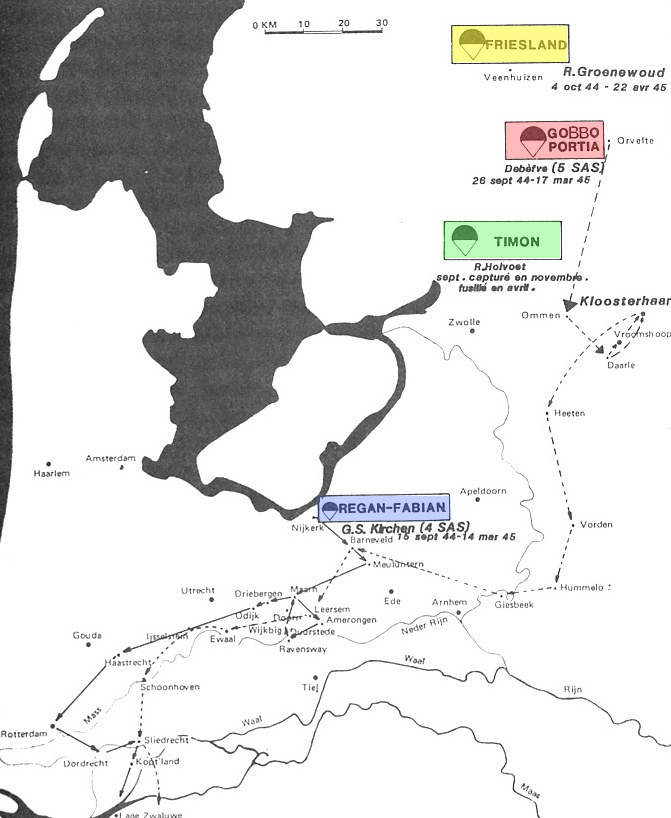
For the Arnhem operation, on September 15, 1944, four men were parachuted in the province of Utrecht. On September 25, another group of 5 men was parachuted in the province of Drenthe. After the defeat of the operations in Arnhem, these Belgian Troops organized with Dutch resistance a service of repatriation for English parachutists fallen behind the enemy lines and a service of information concerning the movements and enemy forces. These groups known as REGAN and GOBBO re-entered to Belgium after having passed the enemy lines in March 1945.
On October 9, an warrant officer and three sergeants were parachuted in "Frise" in order to give military instruction to the Dutch resistance. They will stay there till April 25, 1945.
PHASE II - NOT PARACHUTED OPERATIONS
THE ESCADRON IN RECONNAISSANCE MISSIONS
A. THE ARDENNES

Reorganized in November 1944 in a Reconnaissance Squadron, equipped with armoured jeeps, the unit managed quickly with it's new task and was attached to the 6th Airborne Division. During the counter-attack made by this unit to stop the enemy progression in the Ardennes (offensive von Rundstedt) it was charged during the operation REGENT :
- to make offensive patrols on the main progression road of the 61st Reconnaissance Regiment
- to protect the right side of the British Army and to make the connection with the French S.A.S. protecting the left side of the American Army. However the bad climatic conditions and to operate in a very difficult ground which is mined, all theses missions were accomplished with successful. Ten experts in German and English languages were detached to the British Troops to operate in first line like translator.
B. ANTWERPEN
The unit left the Ardennes on January 16, 1945 and went to Antwerp where it was at the disposal of the 7 B.S.A. like mobile reserve and reconnaissance group for the defence of the heaven of Antwerpen. After 15 days of intensive patrols, the unit joined Brussels on February 2, 1945. During March and April, the Unit reorganized in a regiment saw effective growing.
PHASE III - THE REGIMENT IN RECONNAISSANCE AND ASSAULT MISSIONS
NETHERLANDS AND GERMANY
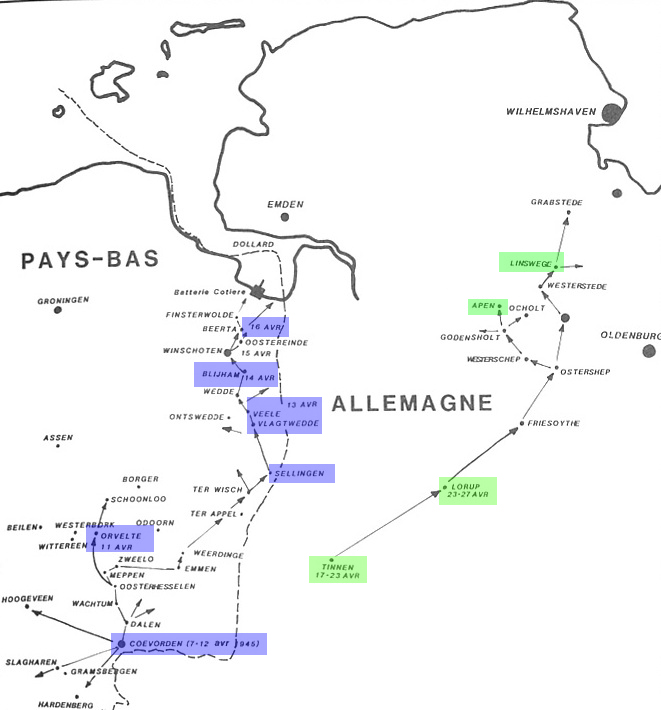
On April 4, 1945 entirely motorized, the Regiment go to Huize-Zelle at the disposal of the 2nd Canadian Corps. It includes a staff squadron and two squadrons. They have 100 vehicles including 50 armoured jeeps. On April 7, the Regiment was sent to Coevorden to hold this city, forming a strategic point on the left side of the 4th Canadian Armoured Division which advanced towards the East. The mission of the Belgians is to make offensive reconnaissance missions in front of the 4th Can Division and to protect its communication lines.
On April 10, the Regiment passes under the command of the 1st Polish Armoured Division. After having captured by surprise and having reinforced the bridge of Oosterhesselen which saved invaluable hours for the Division. Then the Belgian Unit goes in offensive reconnaissance on the main axe of the Division towards Winschoten and the North Sea. During this progression, it meets on April 12, a strong enemy opposition at the destroyed bridge of Veel. After 4 hours of combats, it establishes a bridgehead.
On April, 15, the Regiment takes the villages of Winschoten and Beerta by undergoing some losses.
April 17, the unit leaves in rest in Germany.
On April, 23, the Regiment passes under command of the 2nd Canadian Armoured Brigade. It has the role of cleaning the area in the north of Kusten channel between a Polish Division and a Canadian Division.
On May 9, 1945, the unit left in 3 groups at the disposal of the 8th, 12th and 30th British Corps for counter-intelligence missions. It contributed to the arrest of 3 admirals and several generals SS, but also in charge to research documents and examination of prisoners.
On July, 4, 1945, the Regiment re-enters in Tervueren.